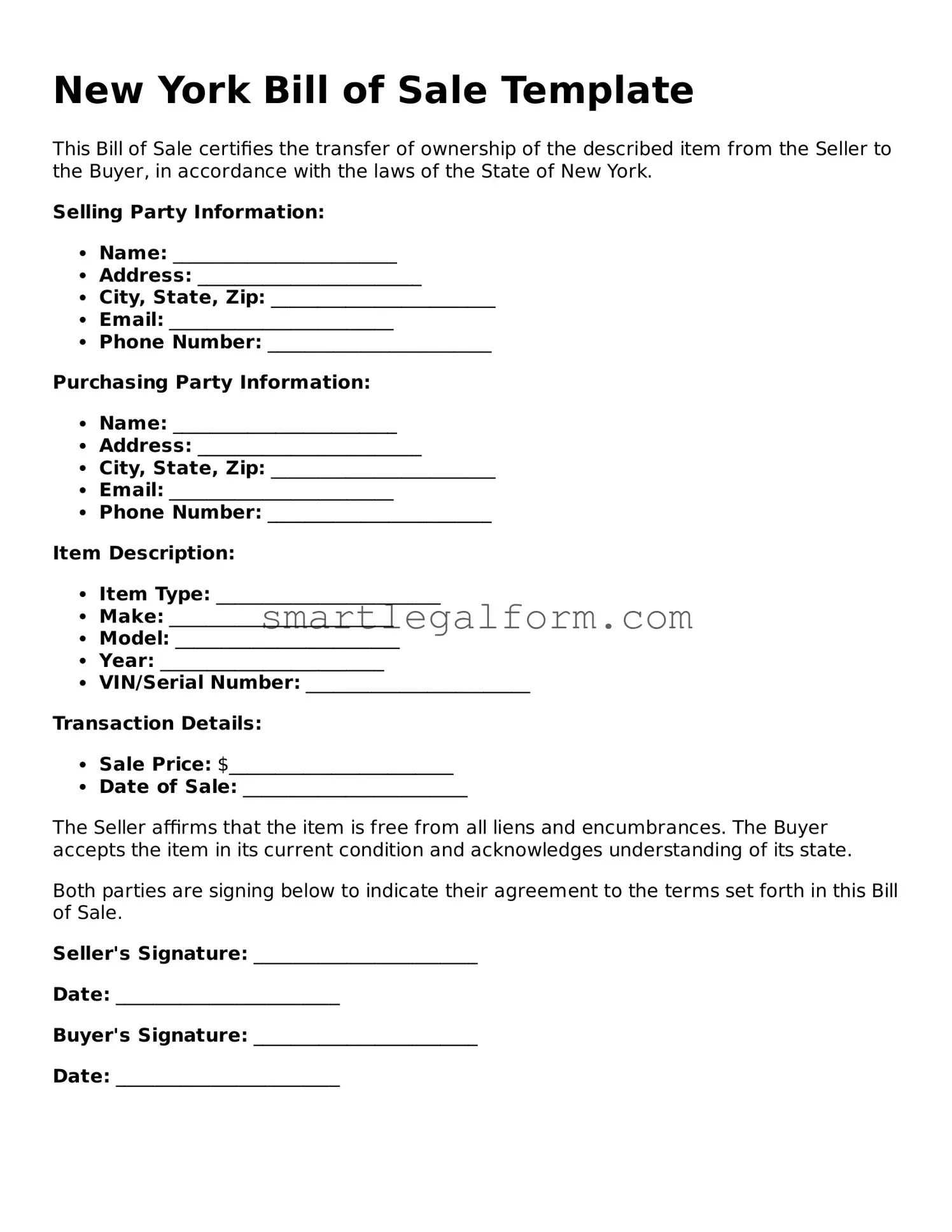New York Bill of Sale Template
This Bill of Sale certifies the transfer of ownership of the described item from the Seller to the Buyer, in accordance with the laws of the State of New York.
Selling Party Information:
- Name: ________________________
- Address: ________________________
- City, State, Zip: ________________________
- Email: ________________________
- Phone Number: ________________________
Purchasing Party Information:
- Name: ________________________
- Address: ________________________
- City, State, Zip: ________________________
- Email: ________________________
- Phone Number: ________________________
Item Description:
- Item Type: ________________________
- Make: ________________________
- Model: ________________________
- Year: ________________________
- VIN/Serial Number: ________________________
Transaction Details:
- Sale Price: $________________________
- Date of Sale: ________________________
The Seller affirms that the item is free from all liens and encumbrances. The Buyer accepts the item in its current condition and acknowledges understanding of its state.
Both parties are signing below to indicate their agreement to the terms set forth in this Bill of Sale.
Seller's Signature: ________________________
Date: ________________________
Buyer's Signature: ________________________
Date: ________________________
